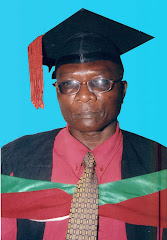DAR-ES-SALAAM city is a home of about 4 million people, despite of its large number of people it lacks strong public transport system. The transport system currently being provided by private operators in the city is not reliable. Citing together with other factors, the high operational costs such as fuel which is being hiked now and then has contributed a lot to the miserable condition facing most city commuters. Despite of the prevailing situation, on the other side a recent fare rise by the Surface and Marine Transport Agency (SUMTRA) in the country, transporters still want the government to allow them redouble the fare to meet the operation demand. One day in the morning, as the sun was shining I got myself to the bus stage and found people were already at the bus stop waiting for town buses popularly known as ‘Daladala’ to take them to their different working places, mostly in town. As the bus was coming in a slow motion as if to stop to make a u turn, all of a sudden the driver sped away leaving the stranded passengers in their mouth open wondering why is it so. The driver never let anyone on board may be for fear of school children who happens to be in large numbers at the bus stage. The running away simply means that, the bus operators are shunning away from students who they do not want to board their busses owing to the fact that, they pay smaller amount of the fare and yet to make it worse are many on the bus stop. The reasons given by them is more fictitious other than running away from students.
 Boarding town buses popularly known as daladala in the morning and evening rushing hours in the city of Dar es Salaam is a big problem. Due to the prevailing situation, some commuters resolve to cling at the back of the bus in an attempt to get in through the window oblivious to the danger posed to them while in motion.
Boarding town buses popularly known as daladala in the morning and evening rushing hours in the city of Dar es Salaam is a big problem. Due to the prevailing situation, some commuters resolve to cling at the back of the bus in an attempt to get in through the window oblivious to the danger posed to them while in motion. On seeing what the driver has done, people are running along with it looking at the conductor who peers back at them through the window while the door is closed. People are panting as they keep on running here and there, it’s as if it looked like a marathon race to them. Others gives up, disgusted, still a number of people ran with the bus for some distance until it stopped. With self congratulatory smile on their sweaty faces, they watched as the door is opened. But before the first person could set a foot on the bus the conductor declares that the bus was not going anywhere. What is it? The outraged mob at the door cries out and a conductor answers, “We are going to the garage” Sometimes you might manage to get into a bus to commute to work and never know where a delay might pop up. It could be a traffic policeman on the road who allows more traffic cars from one direction flow more than the recommended time, a faulty engine on an aged bus, Presidential motorcade on their way to airport is also a growing menace or anything related to it. You might sometimes be obstructed by large crowds of people scrambling to get into a bus, you might as well be pulled away and a man may elbow you out of the way so that he can get on the bus first. A traffic police officer may stop the bus for some other reasons basically known to him. But you can’t blame for he is simply doing his job. However, on the course of dong so, he or she will cause a delay for minutes at a time. Often the delay takes the form of routine checks that these officers of the law carry out. The officer will stop the daladala and circle it, then jotting down things on the notebook. After he had talked with a driver or a conductor and are so notoriously is when they stand in a place of the automated traffic lights at busy intersections.
 While struggling to board a bus, you might sometimes be obstructed by large crowds of people also scrambling to get through a thin door into a bus, you might as well be pulled away and a man may elbow you out of the way so that you can get on the first.
While struggling to board a bus, you might sometimes be obstructed by large crowds of people also scrambling to get through a thin door into a bus, you might as well be pulled away and a man may elbow you out of the way so that you can get on the first.To complicate things further are the very important people in the country such as the high ranking government officials who must use the roads for themselves whenever they pass through. These are the government officials who have to be rushed quickly on important issues while leaving the rest of other drivers on the side where they pass. These have to be ordered to park aside even when the motorcade is half an hour away. This is too embarrassing and boring, some refer the idea as being stupid as well for it doesn’t value a patient who has to be rushed quickly in the ambulance at such an unlikely time. The bigger the dignitary, the longer the delay you will be subjected to some really big important people for a whole hour and even render some roads impassable for a whole day. Most commuters are disgusted at the helm of this situation and this is happening almost in every part of the Dar es Salaam city suburbs.
 You can notice how people are struggling and windows are turned to be doors to let them get in.
You can notice how people are struggling and windows are turned to be doors to let them get in.Commuters have wondered why the Dar es Salaam Bus Transit project popularly known as DART is delaying to take on the operation in the city, may be they would get a relief as earlier promised by the then City Commission. The plan was established by the former Dar es Salaam City Commission as a way of reducing congestion to ease the long standing transport woes facing city commuters in Dar es Salaam city. This was almost a decade ago and it seems to be staggering. The project whose implementation was effectively expected to start this year as per the program set since it was announced to the general public in early 1999, is a great dismay as the whole planning system has left many with lots of question marks after having seen it’s not on the stage. Despite of its gradual preparation, many people seemed to have had forgotten about it and some thought that its development setups might have hit a snag. But some remained silent with the expectations while others have retained their imagination as a promise is a debt. According to the then Dar es Salaam City Commission, under the chairmanship of Mr. Charles Keenja, the principal architect behind the move, the project popularly known as Dar es Salaam Rapid Transit (DART) had been put in preparation alongside with the intensive research activities set to determine how it would work out effectively on various designated routes selected within the city. Earlier studies on the project had proved its success and what was remaining was to see its implementation which up to now is yet to start. The beneficiaries of the project had long been waiting to see some changes taking place in the whole system but the progresses seems to have stagnated or are in slow process. However, the truth about the project was revealed to the general public in May this year in Dar es Salaam when hundreds of show-goers who were anxious to know its current development flocked at the DART Agency pavilion during a week long Public Service Management exhibitions which were held at Mnazi Mmoja grounds. Speaking on behalf of the DART’s Chief Executive Officer, Engineer Cosmas Takule, an attendant who preferred anonymity said, the project would start by September 2010 with the construction of a 21 kilometer road stretching from Kimara mwisho to Kivukoni Front down up to a famous fish market. This is almost two years ahead from now. She said that, this is a pilot project and later it would extend to major six roads that covers approximately 130.3 kilometers in total. In all road stretch, the project would involve the construction of the main 18 bus stations plus other 228 small bus stands. These would be constructed in all the designated routes. The Kimara-Kivukoni road project would last for 20 months and would involve the construction of recreational centers along kivukoni road near State House and some other important buildings located on the fringes of Indian Ocean.
 Vehicles plying between Mbagala and city center or Kariakoo, and those plying between Gongo La Mboto-Sinza-New Post office-and Msasani are the most hit routes that according to commuters, more vehicles are required in those routes to accommodate commuters during rushing hours.
Vehicles plying between Mbagala and city center or Kariakoo, and those plying between Gongo La Mboto-Sinza-New Post office-and Msasani are the most hit routes that according to commuters, more vehicles are required in those routes to accommodate commuters during rushing hours.In this pilot project alone, 29 modern bus stops would be constructed and already the World Bank has donated the sum of US$ 250 (Tshs. 300 billion) to finance the major part of it. However, an attendant noted that Dar es Salaam City Council has also set aside its budget which she didn’t mention when asked. The commencement of the second phase which is still not yet known, would involve the construction of modern bus stand and other facilities along Kilwa road up to Mbagala. The third phase would cover Nyerere Road, the fourth would cover New Bagamoyo Road, the fifth would cover Nelson Mandela Expressway, while the last phase would include Old Bagamoyo Road. Describing the types of buses to be used when the operation starts, these would be long busses like those types of ‘Ekarus’ buses used by the defunct Dar es Salaam Motor Transport popularly known as Usafiri Dar es Salaam capable of carrying 140 passengers at a time. Apart from long buses, there will also be the small and medium sized buses capable of carrying 50 passengers at a time. She said. Distraught with the whole planning system which seems to be moving slowly, a cross section of the Dar es Salaam residents could not remain behind to make a comment on it saying they are totally disappointed with the long standing project which they say is delaying for unknown reasons. Ms. Mwilima Ally of Mwananyamala could not remain dumb to make a comment as she uttered her query targeting the current daladala operators who seem to be totally disorganized and causing chaos in most city’s bus stands. However, she has appealed to the authorities of the DART agency to hurry up with the project to avoid such inconveniences. Zuberi Saidi a form one student at Tambaza Secondary school, is highly impressed by the way the current daladala operators are treating school children. He is optimistic that the newly established project would help students and there will be no any harassments caused. Zuberi who is residing in Gongo-la Mboto gets some difficulties while boarding daladalas due to the growing hostilities between students and the conductors, the habit which has become a rare phenomenon in the city of Dar es Salaam. He urged the DART agency to speed up the process to ward off the existing disparity of the transport woes.
 The three-lane system currently applied on some roads in the city has proved successful though this is in a fresh bid to easy traffic jam in the country’s key commercial capital, Dar es Salaam.
The three-lane system currently applied on some roads in the city has proved successful though this is in a fresh bid to easy traffic jam in the country’s key commercial capital, Dar es Salaam.However, the Chief Traffic Police Commander, James Kombe, has called for investments on alternative modes of passenger transportation, including marine transport, in a fresh bid to easy traffic jam in the country’s key commercial capital, Dar es Salaam. Kombe was commenting on a statement made during parliamentary debate by the Deputy Minister for Home Affairs Khamis Kagasheki regarding the three-lane system currently applied on some roads in the city. Kagasheki had told the House, while responding to a question that the system was not a permanent solution to congestion in the city. The system’s implementation had generated criticisms in that it is one of the causes of road accidents. Commander Kombe said, he concurred with the deputy minister, adding that the city needed to opt for additional modes of transport as a way of decongesting its busy roads.
The commander also suggested the adoption of other permanent strategies to ease traffic jams like construction of ring roads, repairing of roads under municipal councils and introduction of town train services. ”People residing at Kijichi, Kunduchi and nearby areas, can commute using fast boats while those residing at Ubungo can use train services for traveling to and from the city centre. This would help reduce traffic jams” explained Commander Kombe. In his comments regarding the three-lane system during national assembly debate, the Deputy Minister for Home Affairs said future plans were needed to solve the congestion problem in the city. Kagasheki had said the three-way system was intended to ease traffic jam a little bit, especially in morning and evening hours, adding that the measure was not a permanent one.












































